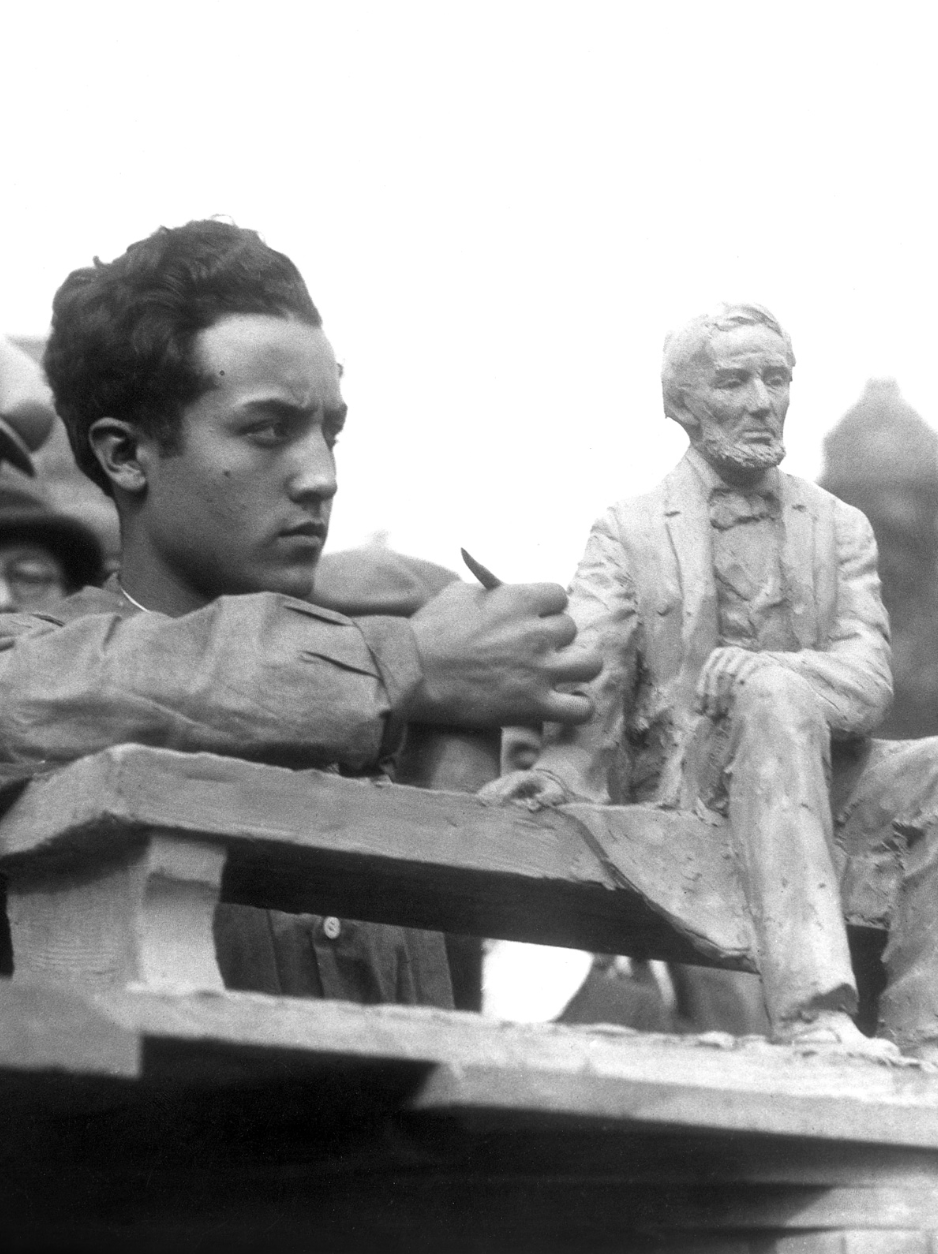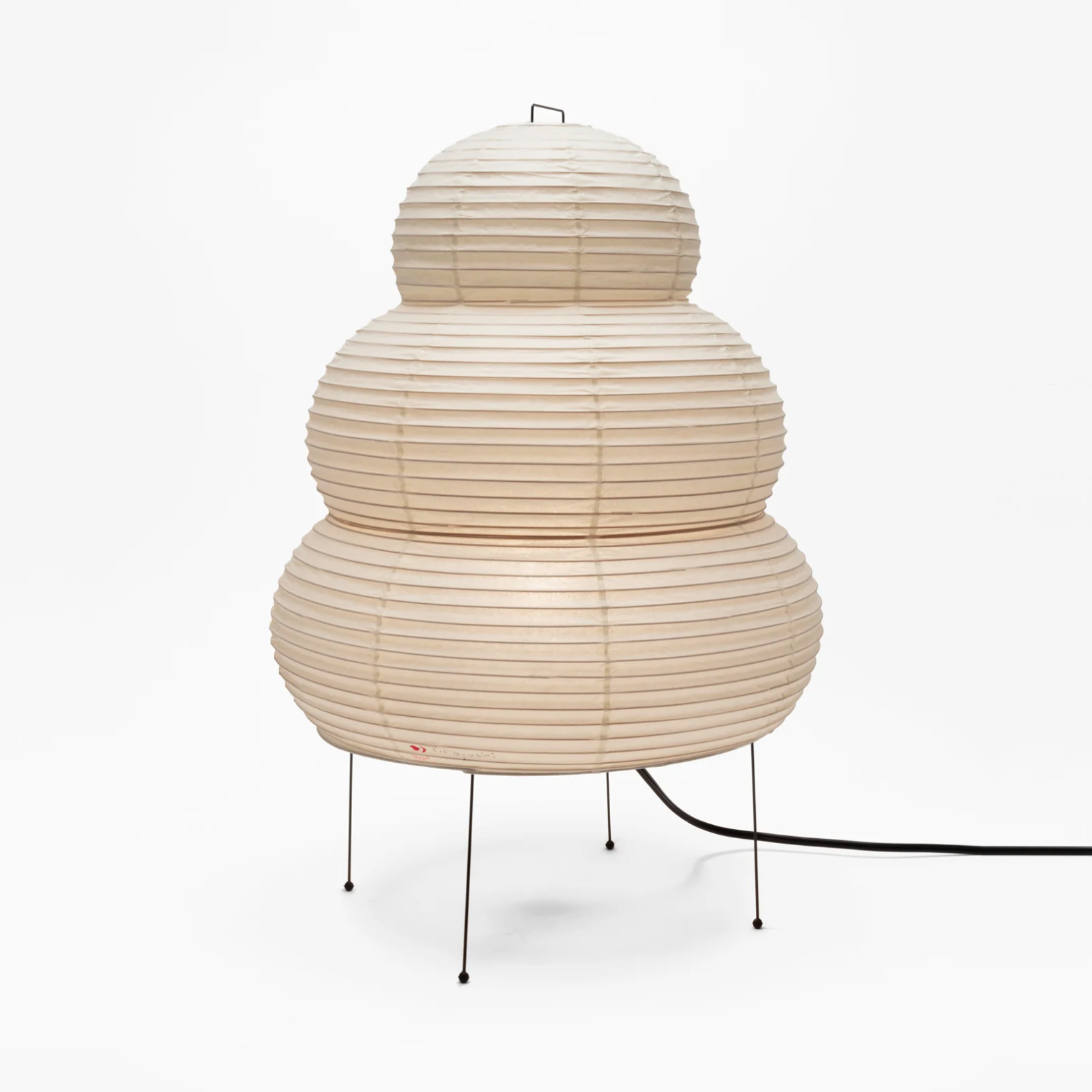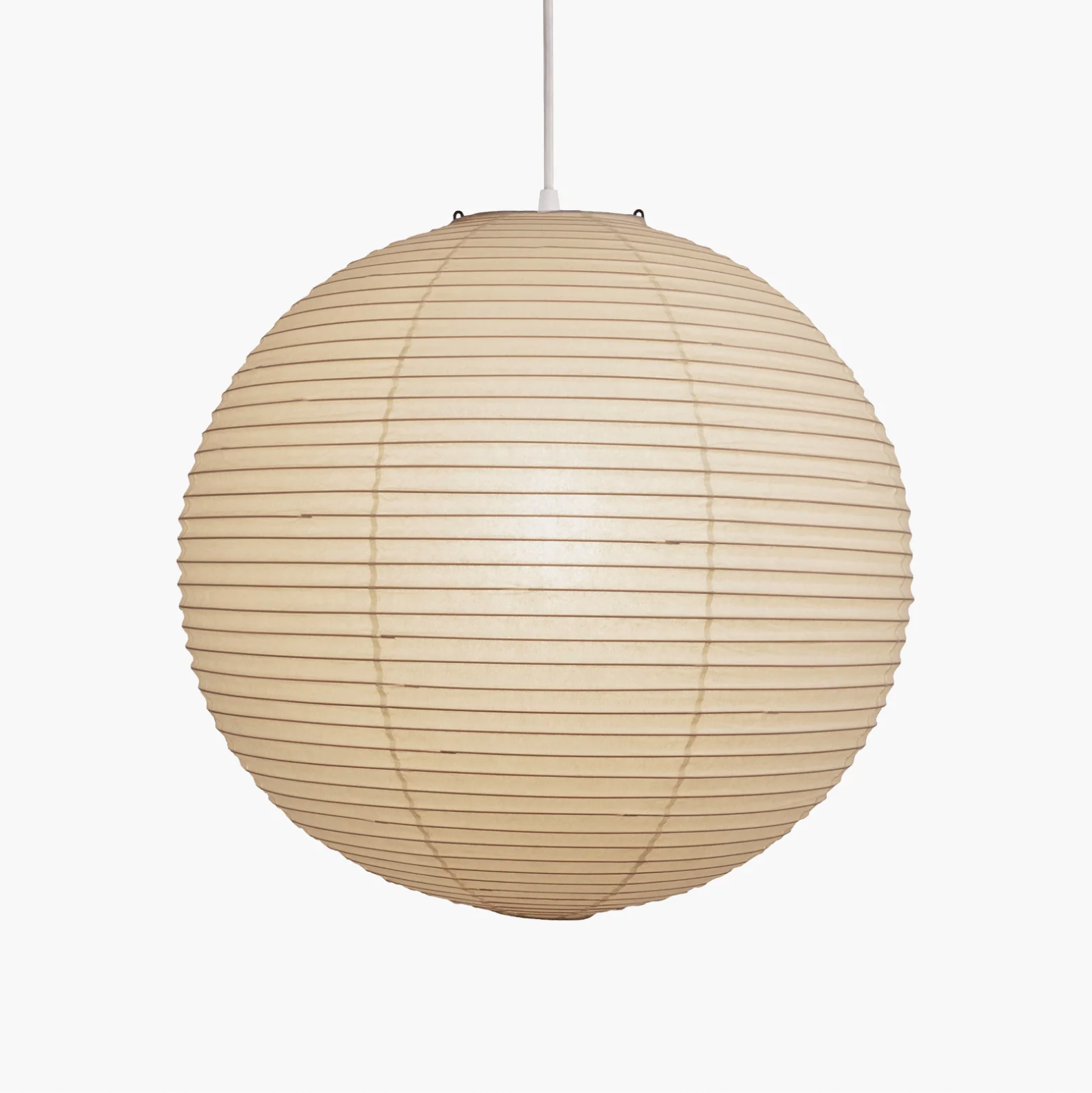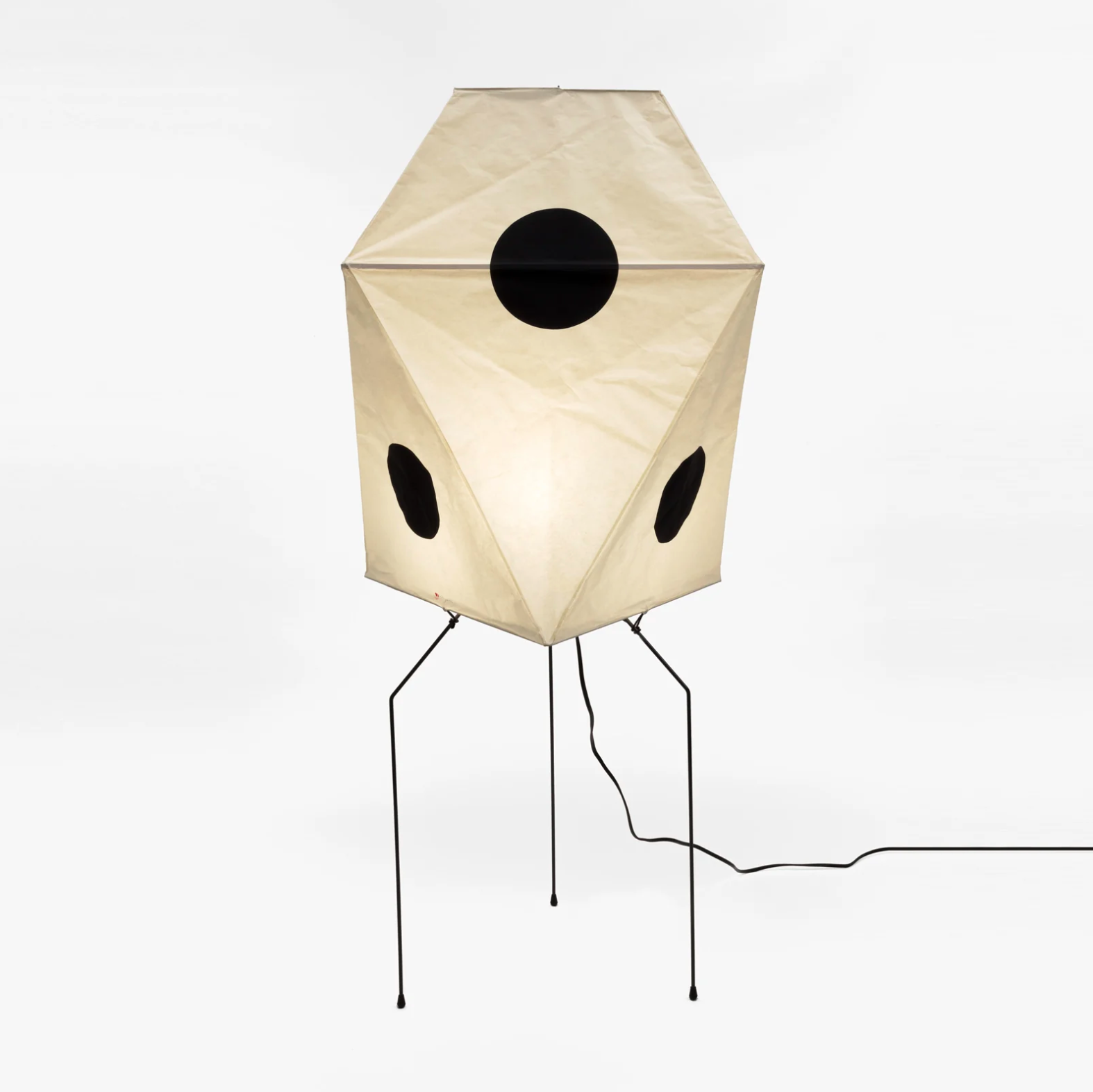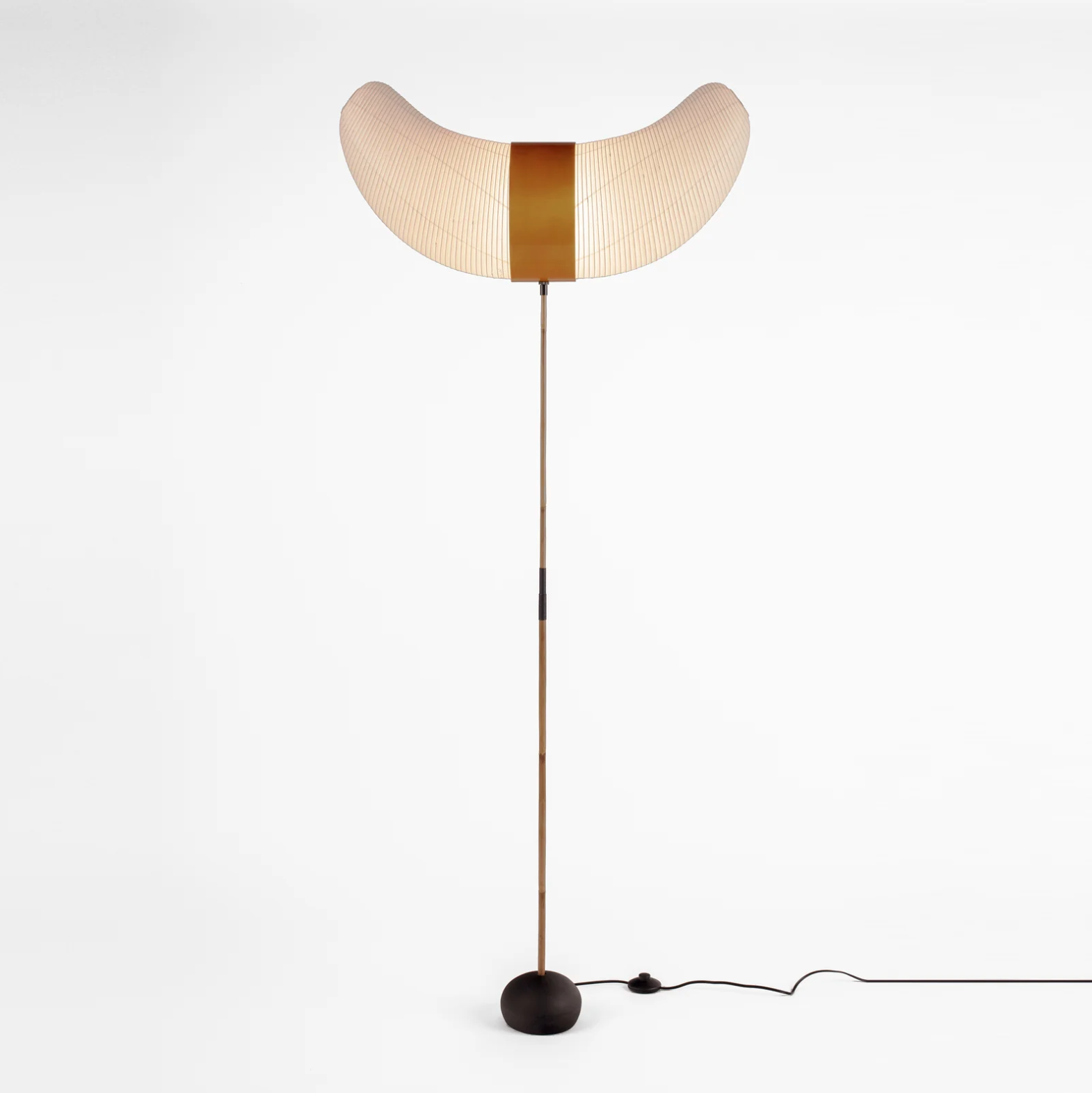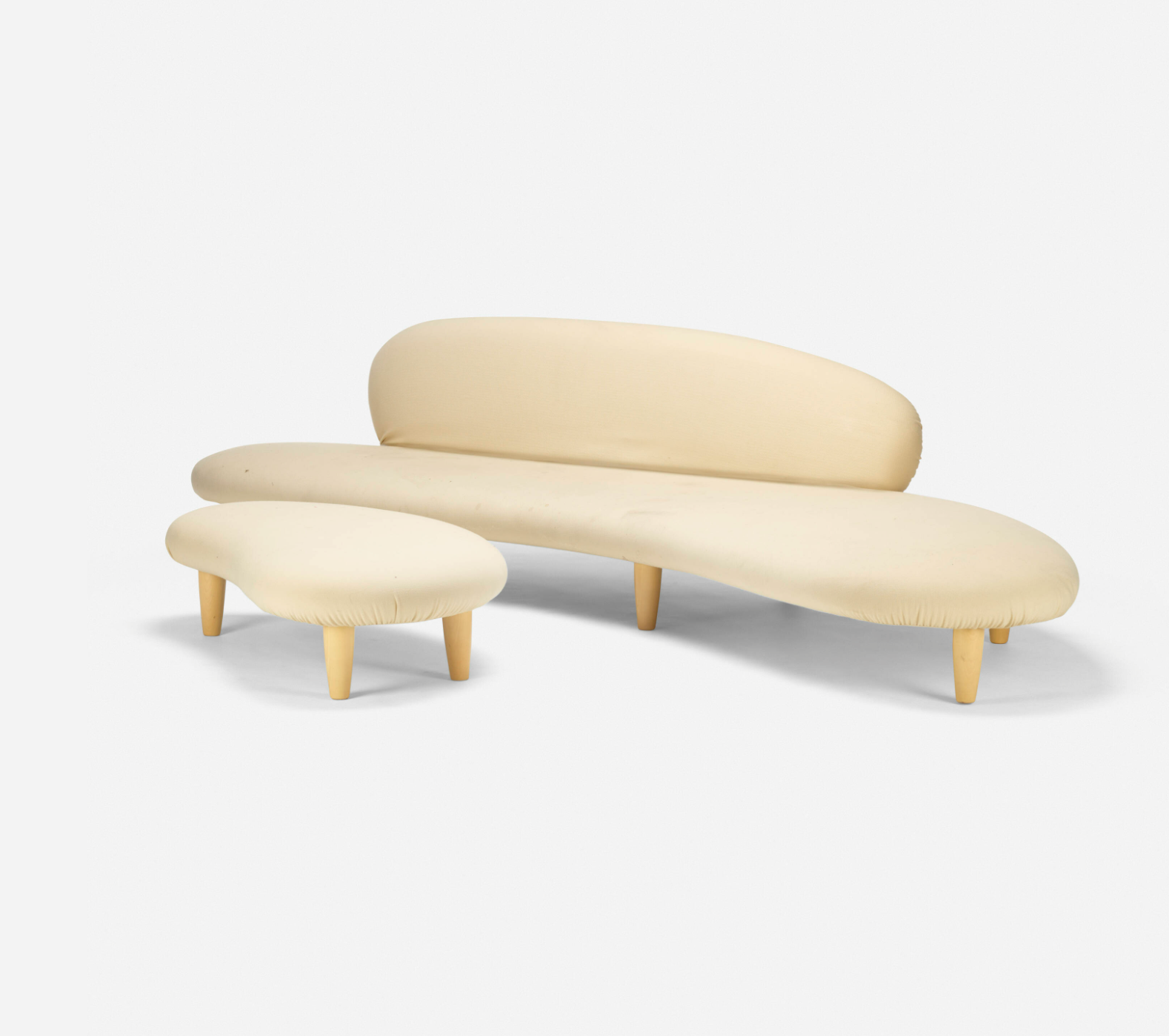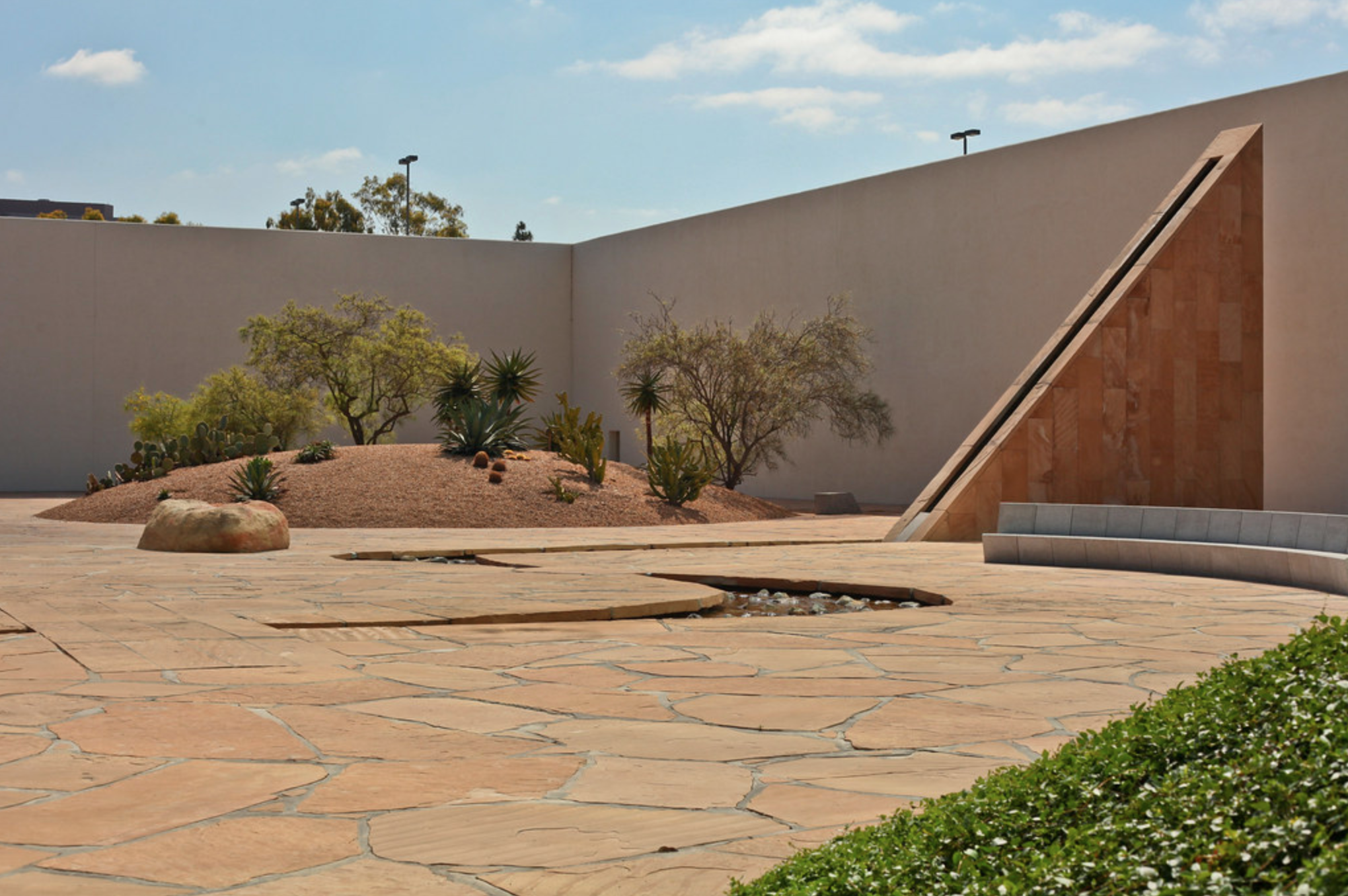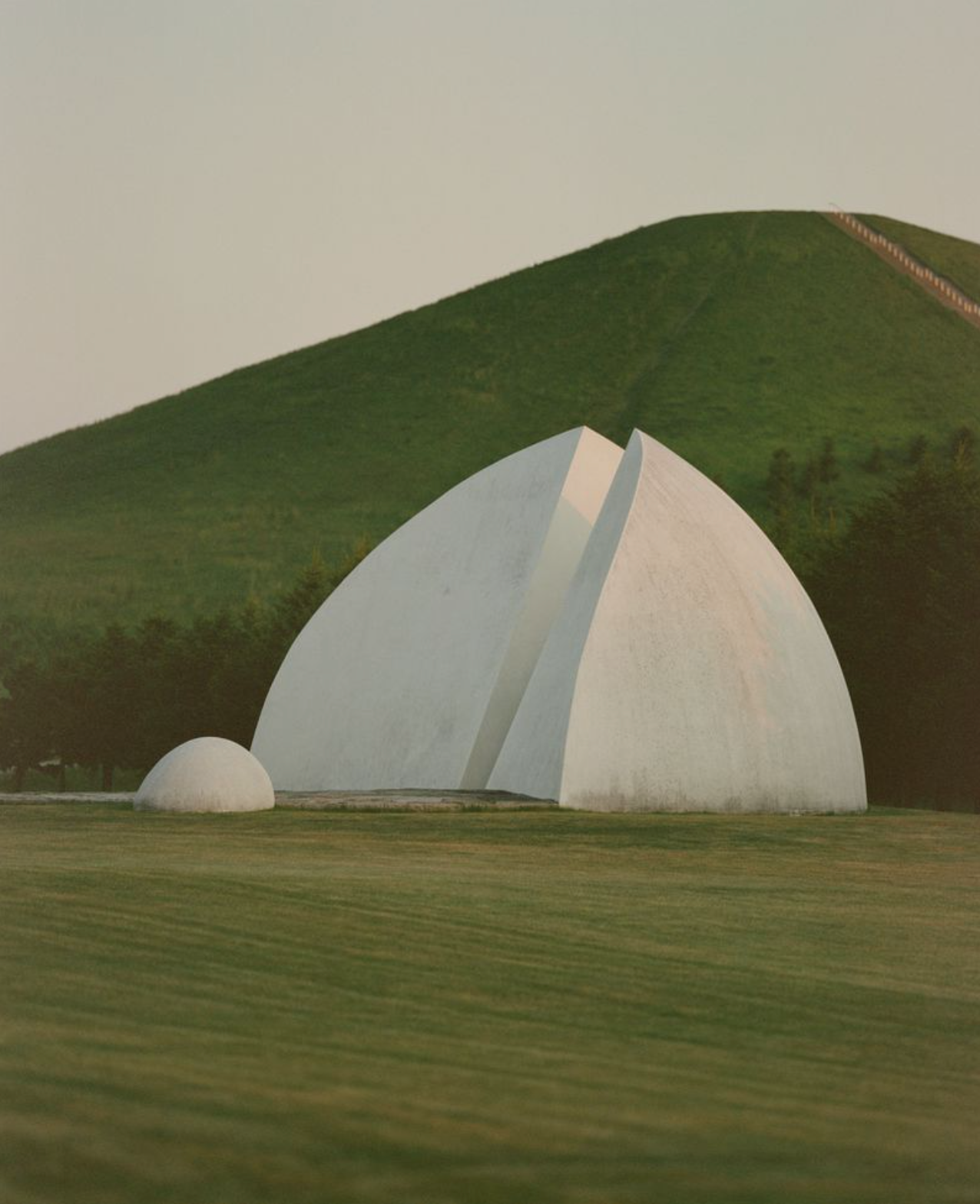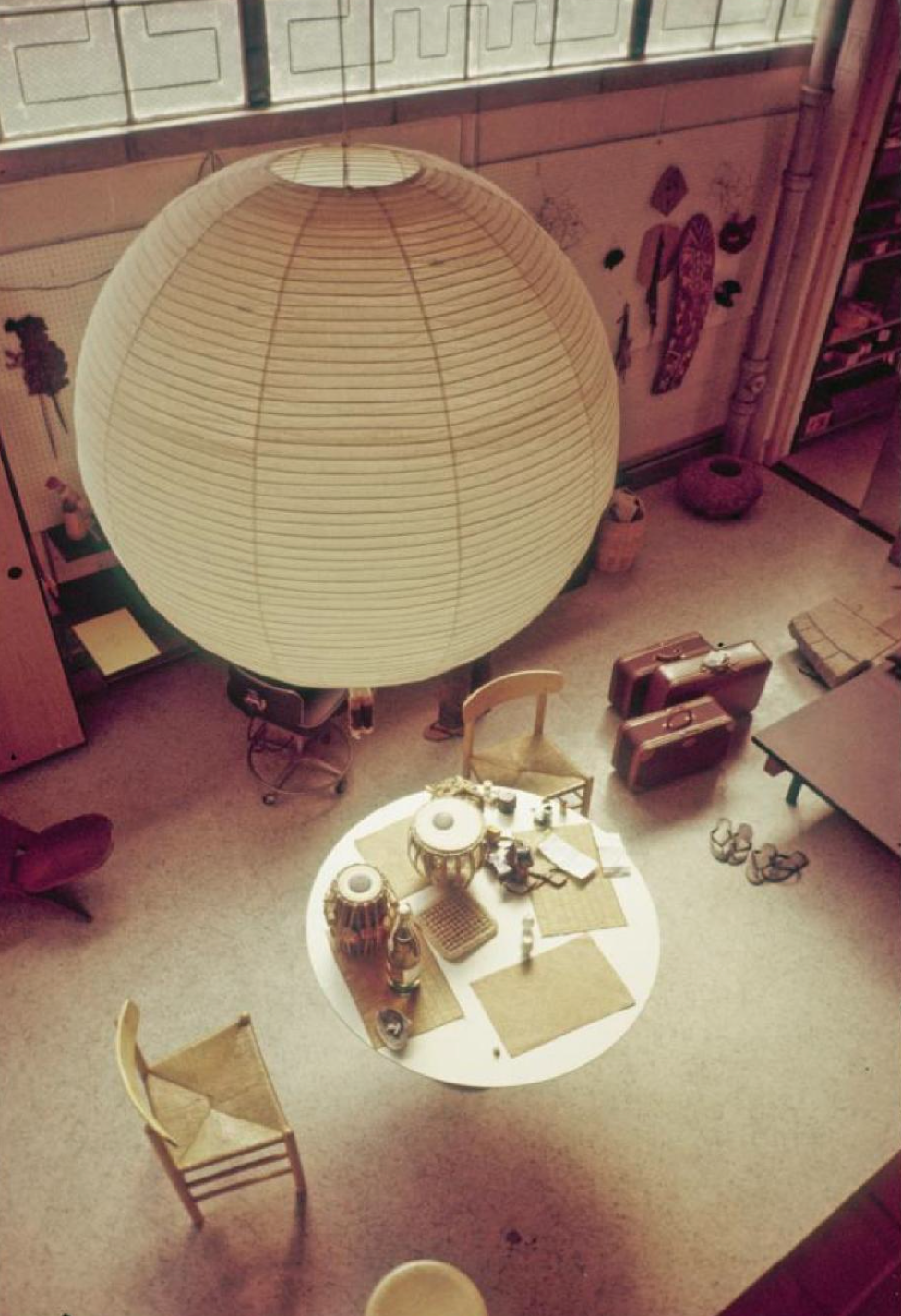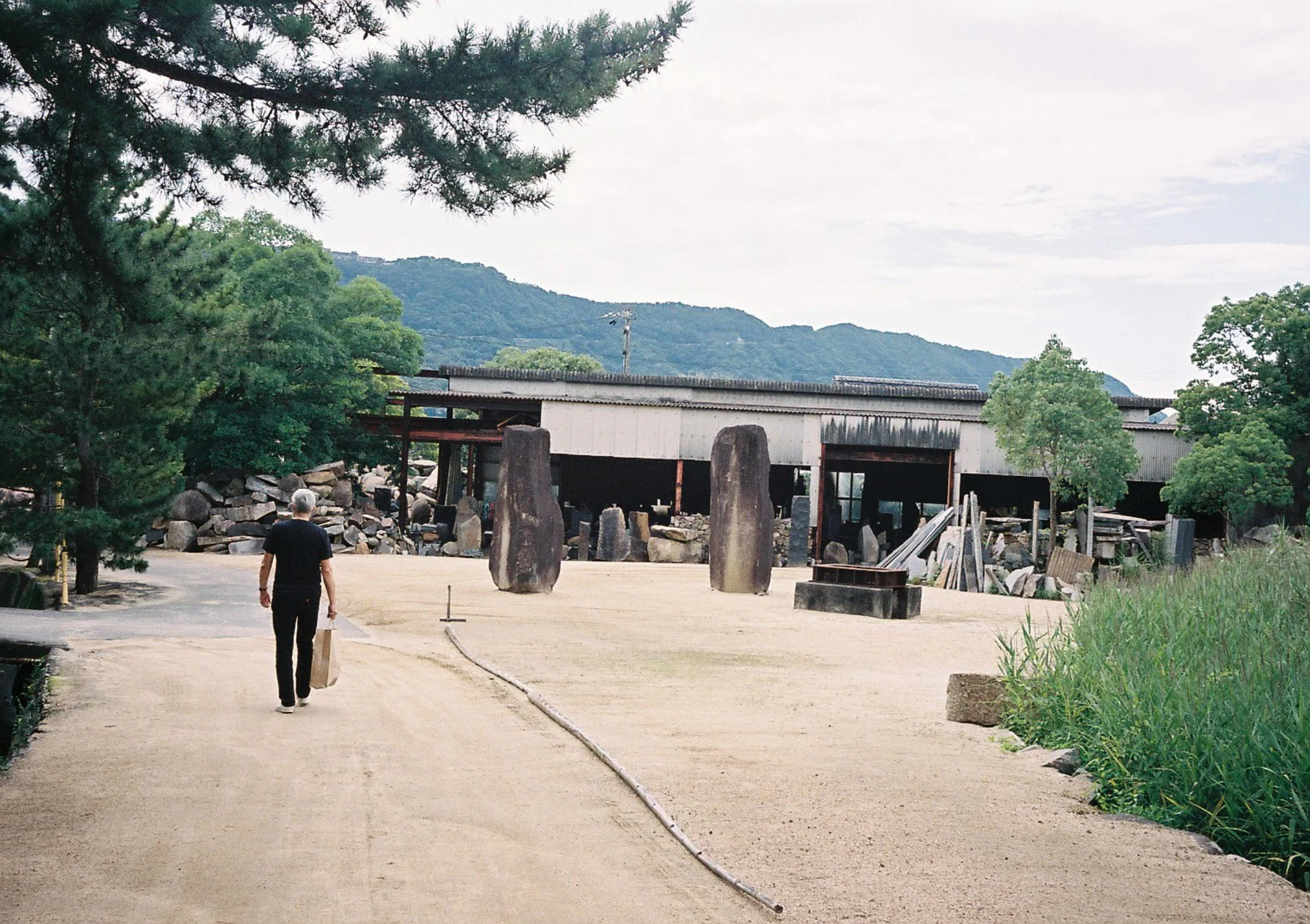Isamu Noguchi
Isamu Noguchi at 32-37 Vernon Boulevard, Long Island City, New York, 1980s. The Noguchi Museum Archives, 04160. ©INFGM / ARS
Isamu Noguchi (1904-1988) was a prominent Japanese-American artist and designer known for his innovative and diverse body of work, which spanned sculpture, furniture design and landscape architecture. He was born in 1904 in Los Angeles to the Japanese poet Yone Noguchi and the American writer Leonie Gilmour, his unique background influenced his creative vision.
Photo from The Noguchi Museum
Noguchi's early education in art began in New York City, where he was exposed to both traditional Eastern and Western artistic traditions. He studied sculpture under the guidance of onetime assistant to Auguste Rodin, Constantin Brancusi, in Paris. These experiences, along with his Japanese heritage, greatly influenced his artistic perspective.
Noguchi's artistic portfolio includes a wide range of work, but he is most well-known for the following:
Furniture Design
Noguchi is celebrated for his innovative furniture designs, most notably his ‘Noguchi’ Coffee Table, which features a glass top balanced on two smoothly shaped wooden elements. This design is a testament to his ability to combine functionalism with sculptural aesthetics.
Isamu Noguchi Coffee Table (IN-50), 1944
“Upon being asked by George Nelson to do something to illustrate an article he wished to write called “How to Make a Table,” I took an idea I had previously worked on of a continuous loop of wood and cut it in two so that, swiveled in the middle, it would still serve to support a glass top—thus to make a table.”
One of his most famous works is the "Akari" series of paper lantern sculptures, which are renowned for their elegant simplicity.
“In 1951 Isamu Noguchi visited the town of Gifu, Japan, known for its manufacture of lanterns and umbrellas from mulberry bark paper and bamboo. Noguchi designed the first of his lamps that would be produced by the traditional Gifu methods of construction. He called these works Akari, a term meaning light as illumination, but also implying the idea of weightlessness.
The fabrication of Akari in Japan at Ozeki & Co. since 1951 follows the traditional methods for Japanese Gifu lanterns. Each Akari is handcrafted beginning with the making of washi paper from the inner bark of the mulberry tree. Bamboo ribbing is stretched across sculptural molded wood forms. The washi paper is cut into strips and glued onto both sides of the framework. Once the glue has dried and the shape is set, the internal wooden form is disassembled and removed. The outcome is a resilient paper form, which can be collapsed and packed flat for shipping.
With the warm glow of light cast through handmade paper on a bamboo frame, Isamu Noguchi utilized traditional Japanese materials to bring modern design to the home. Like the beauty of falling leaves and the cherry blossom, Noguchi wrote, Akari are “poetic, ephemeral, and tentative.” And he was fond of saying, “All that you require to start a home are a room, a tatami, and Akari.” - Noguchi Museum
Sculpture
Isamu Noguchi's sculptures are characterized by their organic and abstract forms. He often worked with stone, metal, and wood to create sculptures that blended the natural and the abstract.
Isamu Noguchi working on the Associated Press Building plaque in Rockefeller Center, 1940. It was carved in plaster and cast in stainless steel—then the largest-ever stainless-steel casting.
Photo: Underwood Archives/Getty Images via Christie's
Landscape Architecture
Noguchi had a profound interest in blending sculpture and landscape design, and he created numerous public sculptures and garden designs. His most renowned landscape work is the UNESCO-recognized "Billy Rose Garden" at the Israel Museum in Jerusalem.
Isamu Noguchi transporting the ‘Slide Mantra’ to the 1086 Venice Biennale
Venice, Italy Image ©INFGM / ARS
Isamu Noguchi Workshops
Long Island City Studio
Isamu Noguchi in his studio in Long Island City, Queens Studio, 1964. The Noguchi Museum Archives, 07282. (Photo Dan Budnik. © The Isamu Noguchi Foundation and Garden Museum / ARS / Estate of Dan Budnik)
Noguchi was eager for more physical space and privacy, leaving him to relocate his studio to the 3,200-square-foot warehouse in Queens after a long stint in Greenwich Village at 33 MacDougal Alley.
His new space was located just across from the Eponymous museum in Long Island City, New York. The space has been preserved and is now open to the public for viewing. This was able to happen with the help of New York City’s Department of Cultural Affairs (DCLA) who awarded the Noguchi Museum $4.5 million for the restoration and renovation of the studio. From 1961 until his death in 1988, Noguchi lived and worked in the studio utilizing the space to model and store sculptures and other artistic projects.
Stone Workshop in Takamatsu
In the Japanese island of Shikoku, Noguchi set up his stone workshop in Takamatsu, Shikoku. The area is known for its excellent stone quality and stone masons. During the last two decades of his life, Noguchi spent the better part of spring and autumn on this ideallic island, working exclusively with stone. After his death in 1999, the studio became a museum and his atelier and living space was preserved as it was when he lived there.
Noguchi's work reflects his constant exploration of the intersection between art, design, and the environment. He sought to break down the boundaries between these disciplines and create pieces that were both functional and beautiful. His legacy continues to influence contemporary design and art, and his works are exhibited in major museums around the world, including The Noguchi Museum in Long Island City, New York, dedicated to his life and work.
"It is said that stone is the affection of old men... It is the most challenging to work with. A dialogue ensues – of chance no chance, mistakes no mistakes. No erasing or reproduction is possible, at least in the way I work, leaving nature’s mark. It is unique and final." -Isamu Noguchi
“We are a landscape of all we have seen. ”
DISCLAIMER: THE MILLIE VINTAGE DOES NOT OWN ANY RIGHTS TO THESE PHOTOS. PLEASE NOTE THAT ALL IMAGES AND COPYRIGHT BELONGS TO THE ORIGINAL OWNERS. NO COPYRIGHT INFRINGEMENT INTENDED.

